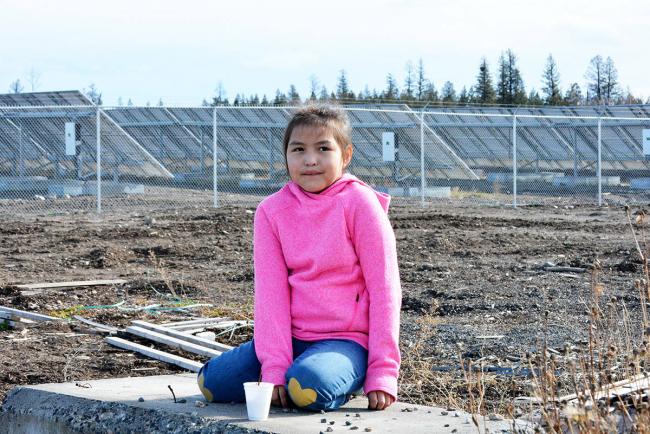Oct. 22, 2019
The Tsilhqot’in Nation recently celebrated the completion of its new solar farm 80 kilometres west of Williams Lake, the first of its kind for the region.
During an event held Friday, Oct. 18 at the site of the solar farm, engineer Michel de Spot, president and CEO of EcoSmart, one of the companies hired to help with the project, said it is the largest solar farm in B.C.
“Its total size is 1.25 megawatts,” de Spot said during the celebration. “It’s not very big, but it is the largest one in B.C.”
Located along Highway 20 west at the River West Forest Products site, the 1.25 megawatt solar farm contains 3,456 panels mounted in 216 sections.
“When it is connected the solar farm will produce 1,500 megawatt hours a year,” de Spot said. “It means about 150 homes, but that does not mean it feeds directly to the homes. We feed it to BC Hydro and BC Hydro sends you back the power.”
Chief Joe Alphonse, Tsilhqot’in National Government tribal chair, said it was a huge accomplishment for the nation.
He thanked Chief Russell Myers Ross from Yunesit’in for his dedication and vision for the solar farm.
“It was Chief Russ that was the one that really pushed this through as a nation project and made sure it kept moving,” Alphonse said. “In a month’s time we will be punching power into the hydro lines here.”
In the past, when River West Forest Products was up and running, it had to rely on a diesel generator because it could only access 50 per cent electricity, which was very costly, Alphonse said.
“Electricity is cheap and it’s something we don’t have an abundance of in the Chilcotin.”
Myers Ross said it took almost five years from start to finish and once the feasibility study was completed his community handed it off to the Tsilhqot’in Nation.
Read more: Tsilhqot’in National Government and BC Hydro to negotiate power purchase agreement
Originally he wanted to do a solar farm in his community, but in the end chose the River West site. It was more suitable because the hydro poles were already there.
Praising Tsilhqot’in National Government economic development officer Dolly Kershaw for managing the project, Myers Ross said 18-plus trainees from different communities worked on it.
“Each one of the trainees came from our six different communities so even though it started at Yunesit’in it really became a nation project,” he said.
Chief Francis Laceese of Tl’esqox (Toosey) First Nation said the nation’s new company — Dandzen Development Corporation — oversaw the project.
“Clean energy, green energy, I think that is the way to go to sustain ourselves as a nation,” Laceese said. “It will create revenue down the road for future generations. We have a lot of sun, lots of wind and lots of water.”
Dandzen Development has signed a 25-year electricity purchase agreement with BC Hydro, de Spot said.
“The solar farm will quietly, year after year, for the next 25 years, produce electricity to the grid and generate considerable revenue from the net metre system. Every month you will receive a cheque from BC Hydro,” he said, adding there is a 25-year warranty on all the modules in the solar farm.
He thanked Chief Myers Ross for his trust to work with EcoSmart.
“The workmanship is excellent, you can see it,” de Spot said. “I think it is very important because it is a very good demonstration of Indigenous clean energy involvement. It is the first time that we have in Western Canada, maybe even in Canada a 100 per cent owned and operated solar farm by First Nations.”
Myers Ross said the Nation also learned it will be receiving a 2019 Clean Energy BC award to be presented on Nov. 7.
Read more: Yunesit’in’s future bright thanks to solar panels
[Top photo: Colette Billy, 9, of Tsi Del Del (Redstone) First Nation and other members of the Tsilhqot’in Nation attended the Tsilhqot’in Solar Farm Celebration held Friday, Oct. 19. Monica Lamb-Yorski photos]

